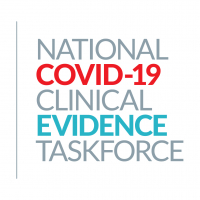
The National COVID-19 Clinical Evidence Taskforce, in partnership with the Infection Control Expert Group (ICEG), have published new clinical flowcharts to guide clinicians and trained first aid responders in delivering potentially lifesaving CPR as safely as possible. These include:
- Preparedness for CPR during the COVID-19 pandemic
- CPR of adults with COVID-19 in healthcare settings
- Basic life support for adults in the community during the COVID-19 pandemic
The Taskforce established a Cardiac Arrest Working Group as a result of feedback from hospital and community representatives citing a hesitation to commence resuscitation of people in cardiac arrest during the pandemic, stemming from concerns about infection risk.
Drawing on expertise in infection prevention and control, infectious diseases, emergency care, intensive care, anaesthetics, retrieval, primary care and public health, the working group considered the best national and international advice on CPR during the COVID-19 pandemic. The guidance was developed with broad consultation, incorporating input from government, consumers and healthcare workers in hospitals, primary care and aged care facilities.
The working group worked closely with the Australian Resuscitation Council (ARC) and the 32 peak clinical bodies who are members of the Taskforce to ensure that the CPR flowcharts would be consistent with national guidance on the use of Personal Protective Equipment (PPE) and importantly, supported broadly by healthcare professionals.
Working Group member, Adjunct Clinical Professor Simon Craig, said the Taskforce recognised a need to provide healthcare providers, healthcare workers and members of the community with clear guidance on resuscitation principles during the COVID-19 pandemic.
'We understand the pandemic has caused much confusion and concern for many clinicians about the safety of normal life-saving procedures both within healthcare settings and out. The flowcharts reinforce the importance of first maximising staff safety and then commencing chest compressions as soon as possible.'
'Preparedness of health care providers is critical. This means ensuring the wishes of patients and their families in terms of treatment plans are documented and communicated, health care workers receive life support training incorporating PPE use and resuscitation equipment is readily available together with appropriate PPE.'
Australian Resuscitation Council Chair and working group member Professor Peter Morley said it is vital that trained first aid responders feel confident to perform ‘compression only’ CPR. 'Lives can be saved by starting basic life support and calling for help early. We know that delays can result in worse outcomes for patients. The key differences to regular CPR if a person may have COVID-19 are to wear a mask if you have one, look for breathing with chest movements but do not place your face or hand near the person’s mouth or nose, and then start CPR performing chest compressions only.'
'If you’ve done Basic Life Support training and are willing to jump in to help save a life, then don’t hesitate. Our advice is to call for help, start chest compressions if you’re willing to do so, and get someone to fetch a defibrillator if one is handy.'
For more details, view this CPR Chart Explainer or visit covid19evidence.net.au.

